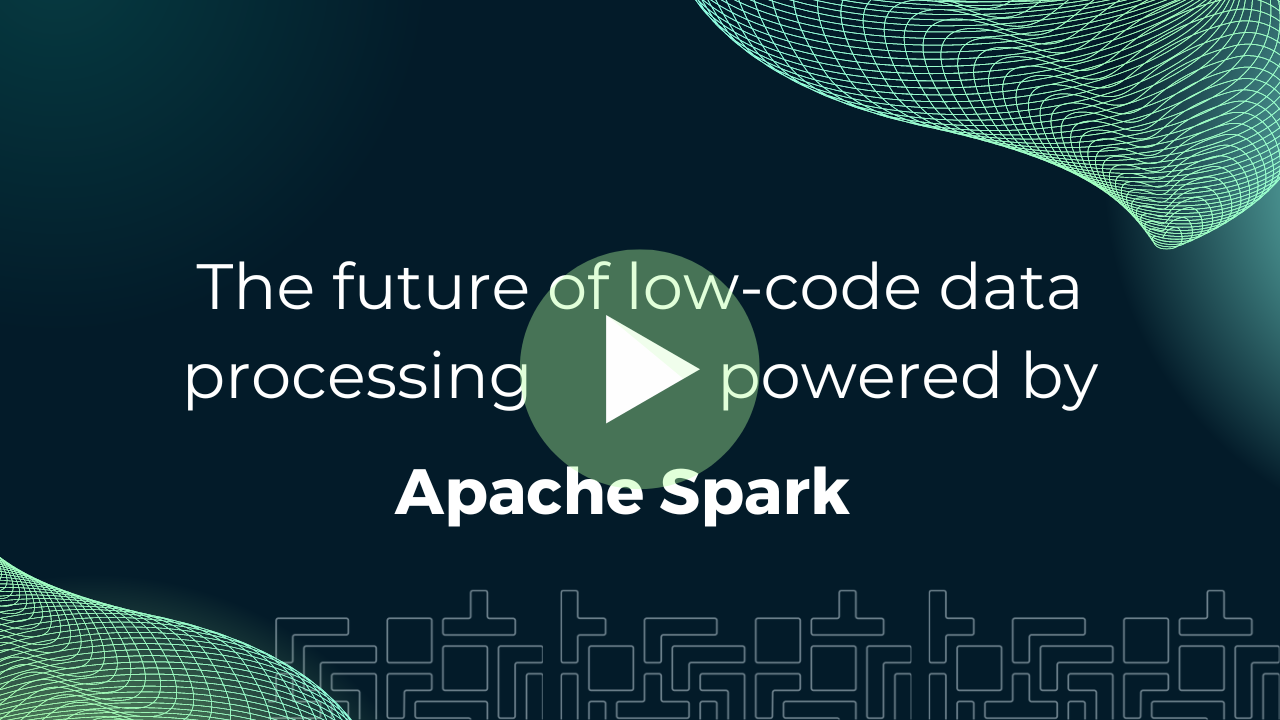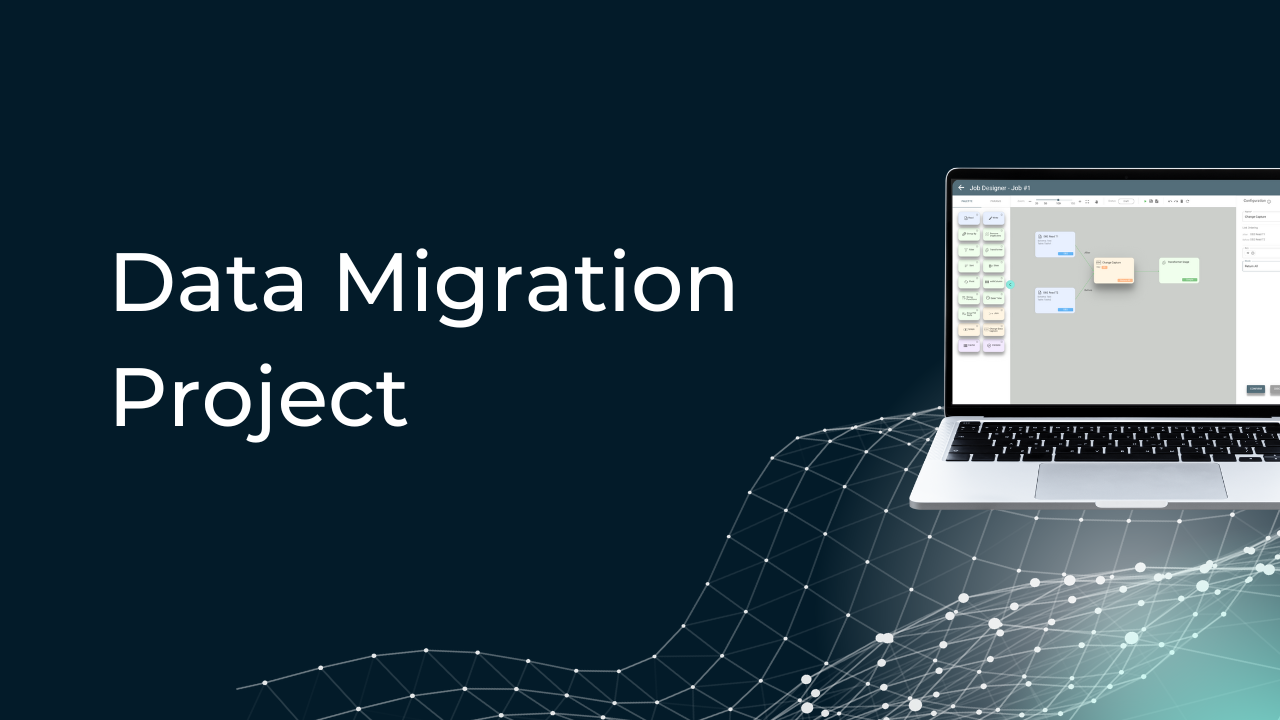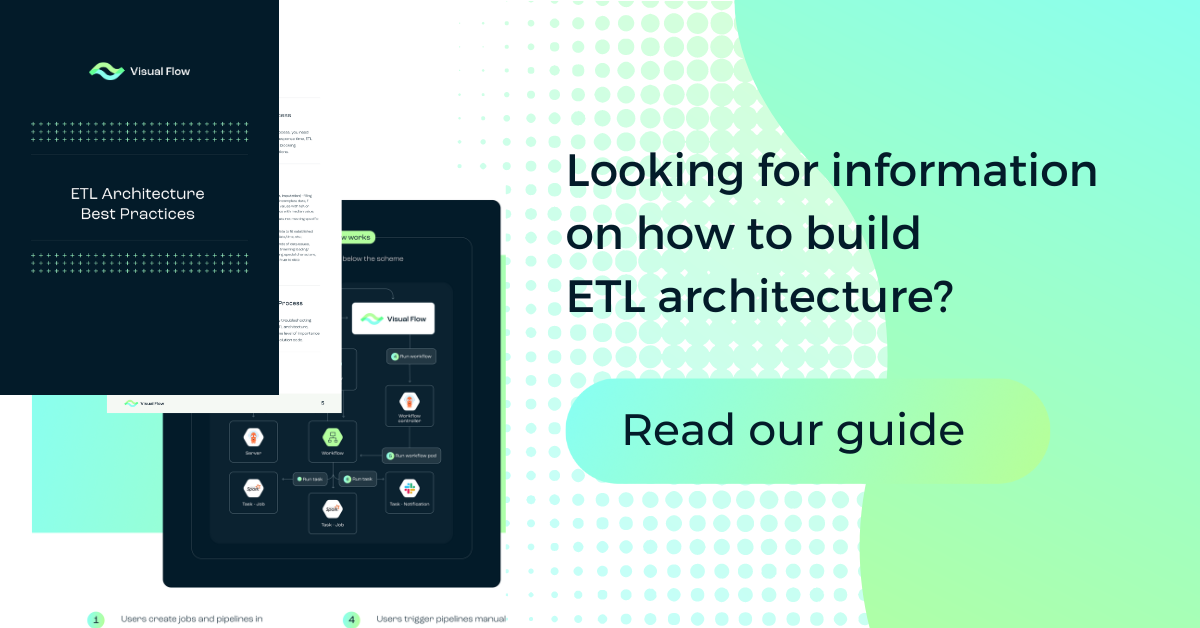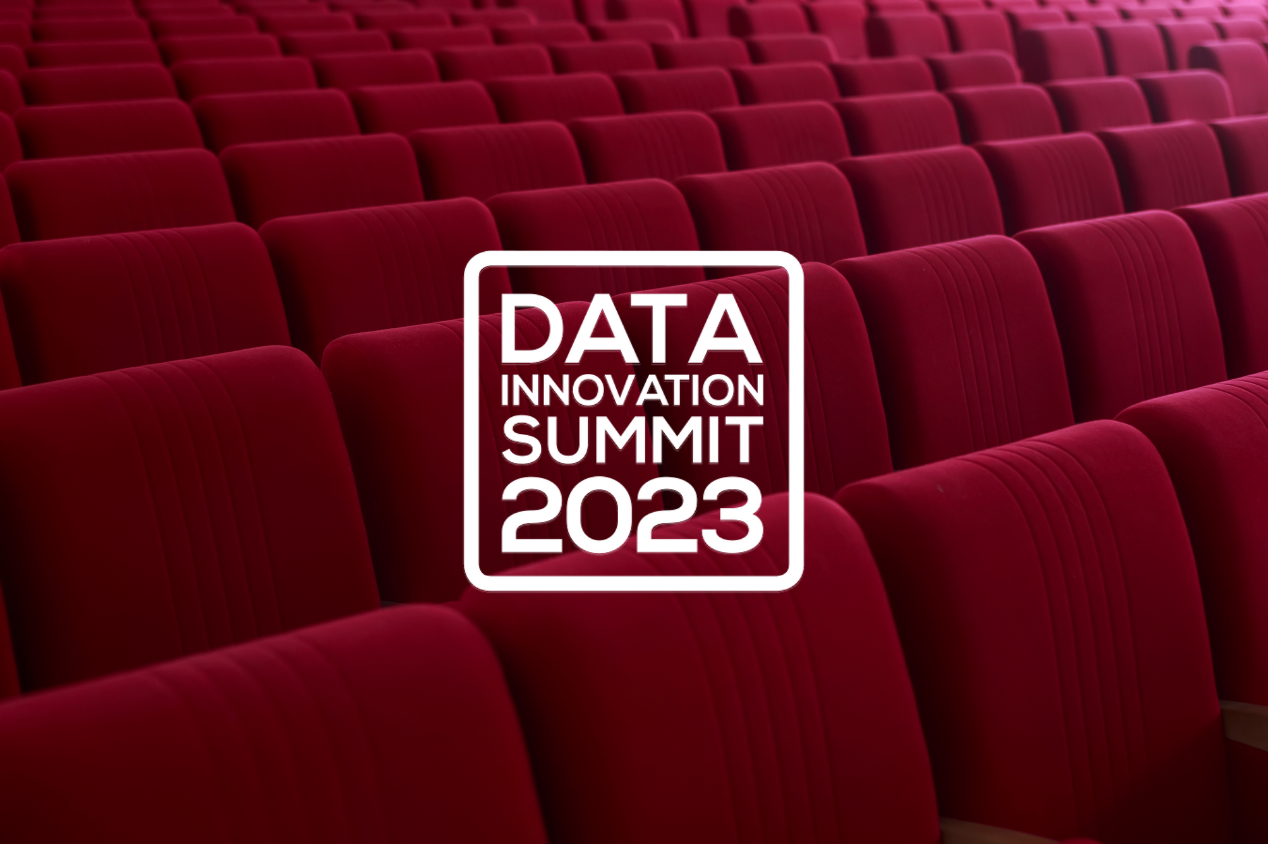Table of Content:
Table of Content:


Data is being generated at a staggering rate in all aspects of life. That’s why the ability to process and analyze this data is really important.
And the most effective approach is to use real-time streaming platforms. In this article, we’ll tell you what a data streaming platform is, introduce some of the most popular tools available today, and explain why these platforms are indispensable for modern businesses.
What Constitutes a Data Streaming Platform?
A data streaming platform manages continuous flows of data in real time. Here’s what makes up a typical data streaming platform:
- Data ingestion. A streaming platform captures large volumes of data from various sources like IoT devices, social media, online transactions, and sensors.
- Data processing. A streaming platform processes data as it comes in. This means analyzing, transforming, and enriching data immediately.
- Data storage. Sometimes you need to store data for historical analysis or compliance. A good streaming platform offers both short-term storage (for immediate processing) and long-term storage solutions.
- Data analysis. After data is ingested, processed, and stored, it needs to be analyzed to extract needed insights. Analysis tools help detect patterns, trends, and anomalies in real time.

Moreover, a streaming platform expands if necessary to handle the increased load. It is resilient against failures since data streams are unpredictable sometimes. A good streaming platform connects to databases, data warehouses, analytics tools, and visualization software already used by the organization. And, of course, streaming platforms feature encryption, access controls, and auditing capabilities to meet regulatory requirements.
Popular Tools for Real-time Data Streaming and Reasons to Choose
We’ve prepared a list of some trustworthy streaming analytics tools to help you make a choice. Let’s explore them one by one.
Estuary Flow
Estuary Flow excels in ETL (Extract, Transform, Load), ELT (Extract, Load, Transform), CDC (Change Data Capture), and streaming pipelines. It’s built from the ground up for truly real-time data integration.
- Users can build and automate data pipelines for both batch and streaming data without relying on multiple tools.
- Millisecond latency enables Estuary Flow to integrate real-time and batch processing into a unified concept called “collections”, so that data operations are consistent across different types of data flows.
- Estuary Flow offers the fastest and most reliable CDC (Change Data Capture) available today, with sub-100ms end-to-end latency. It captures changes in databases and streams them in real time to various destinations.
- Users can write SQL queries to process and manipulate streaming data.
- Estuary Flow supports data integration from numerous sources, including databases, APIs, and SaaS applications. It can sync data to various destinations like data warehouses, key-value stores, vector databases, search engines, and more.
- Hundreds of no-code connectors for streaming CDC, real-time, or batch data reduce the complexity of setting up data pipelines and accelerate time-to-value.
- Its catalogs are completely declarative and allow users to define data structures and transformations in a clear format.
- The platform handles high-throughput environments and scales horizontally. Robust fault tolerance features ensure data integrity.
As for security, Estuary Flow offers encrypted data transfers and strong access controls. Its pricing structure is approachable, customer support responds timely, and intuitive CLI tools allow for bulk configuration tasks.
Google Cloud Dataflow
Google Cloud Dataflow is a fully managed service for stream and batch processing, built on the Apache Beam programming model. Its key features are as follows:
- You can write your pipeline code once and execute it across various execution environments. This means you handle both stream and batch processing with the same codebase.
- Dataflow takes care of provisioning and managing the necessary resources.
- It automatically scales resources up or down based on the workload.
- You can create real-time data processing pipelines that analyze and act on data as it arrives.
- Dataflow handles large volumes of historical data (suitable for ETL jobs, data warehousing, and other batch-oriented tasks).
- Dataflow integrates with other Google Cloud services, such as BigQuery, Pub/Sub, Cloud Storage, and AI Platform.
- You can group data into fixed or sliding windows and define when results should be emitted.
- Google Cloud Dataflow includes strong security features, such as data encryption at rest and in transit, IAM roles and permissions, and VPC Service Controls.
- Dataflow supports multiple SDKs, including Java, Python, Go, and SQL (via Beam SQL), so you can choose the programming language you are comfortable with.
- You can track the performance and health of your pipelines in real time through Stackdriver to troubleshoot your data workflow.
Dataflow’s pricing model involves charging based on actual resource usage. New customers get $300 in free credits to spend on Dataflow.

Cloudera Data Platform
The Cloudera Data Platform (CDP) is a hybrid data platform created for modern data architectures that allows organizations to manage and analyze data across both private and public clouds. It has the following features:
- It brings together data from different sources into a single cohesive platform to enable consistent policy-based controls, centralized security, governance, and management capabilities.
- Cloudera’s open data lakehouse is now available on a private cloud. This setup enables high-performance analytics on all your data.
- CDP delivers cloud-native data analytics across the full data lifecycle. Businesses no longer have to refactor or redevelop applications as business conditions change.
- Features like SDX (shared data experience) maintain data lineage, facilitate self-service access to trusted data, and meet the compliance needs of regulated industries.
- CDP accelerates AI and machine learning development at scale with self-service machine learning workspaces and underlying compute clusters.
CDP also optimizes resource utilization through features like workload isolation and multi-tenancy management. The resources are allocated efficiently based on user type, workload type, and priority. You can create real-time streaming analytics applications with CDP to respond to critical business events promptly.
Amazon Kinesis
Amazon Kinesis is designed by AWS and offers comprehensive solutions for collecting, processing, and analyzing real-time data streams. Despite handling massive amounts of data, this platform also:
- Simplifies the creation of real-time data pipelines for analyzing streaming data, such as video, log analytics, event analytics, and IoT analytics.
- Boasts a fully managed, serverless infrastructure (with no need for manual server management).
- Makes it possible to derive insights in minutes rather than days through ingesting, buffering, and processing streaming data with minimal latency.
- Supports applications that range from machine learning (ML) to real-time analytics.
In short, Amazon Kinesis offers businesses the ability to perform high-throughput, low-latency data processing.

IBM Streams
IBM Streams analyzes large volumes of data in real time. This platform is part of the IBM Cloud Pak for Data, and it offers a secure environment for developing and deploying streaming applications:
- IBM Streams allows for the continuous analysis of data in motion.
- The platform supports complex event processing, machine learning, and predictive analytics.
- It integrates with various data sources, enterprise systems, and cloud services like databases, messaging queues, etc.
- Its domain-specific language called Streams Processing Language (SPL) is created for expressing streaming data applications. It allows developers to build efficient streaming applications quickly.
- The platform supports the visualization of data streams and analytics results for better insights.
- IBM Streams includes pre-built operators and toolkits for common data processing tasks like data ingestion, transformation, and output. This reduces the complexity involved in setting up streaming analytics pipelines.
- The platform supports the integration of machine learning models. It enables real-time scoring and predictive analysis, useful for applications requiring immediate responses based on incoming data.
IBM Streams processes vast amounts of data with low latency, supports a wide range of use cases and data types, and ensures data protection and compliance with industry standards.
Azure Stream Analytics
Azure Stream Analytics is a streaming data platform offered by Microsoft. It allows for real-time data analysis from various sources and identifies patterns and triggers actions. Azure Stream Analytics also:
- Processes millions of events with low latency.
- Connects with sources like Event Hubs, IoT Hub, and Blob storage, and outputs to services, such as Azure SQL Database, Azure Cosmos DB, and Power BI for visualization
- Simplifies the development of streaming jobs with a no-code interface.
- Uses SQL with temporal constraints to define how streaming data is processed, including filtering, aggregation, and pattern matching.
- Runs in the cloud for large-scale processing or on Azure IoT Edge for low-latency, edge-based processing.
- Performs ETL operations on streaming data to store it in formats like Parquet in Azure Storage.
- Integrates with Azure SQL Database and Azure Cosmos DB to support event-driven application development.
- Detects anomalies, such as spikes, dips, and gradual changes in sensor values.
- Performs geospatial analysis for applications like fleet management and driverless vehicles.
- Monitors high-value assets remotely and predicts maintenance needs to prevent downtime and extend asset life.
- Analyzes user behavior on websites by processing clickstream data in real time.
In short, Azure Stream Analytics is a perfect streaming data platform for big data streaming analytics.

Striim Cloud
Striim Cloud is known for its infinitely scalable unified data integration and streaming capabilities. It delivers real-time data across various cloud platforms, including AWS, Google Cloud, and Microsoft Azure. It also:
- Offers an infinitely scalable software-as-a-service (SaaS) solution that allows businesses to ingest, process, and deliver real-time data.
- Unifies data from diverse sources in real time.
- Employs advanced security features for networking, encryption, and secret storage.
- Builds scalable AI-ready data pipelines.
- Captures and integrates data from hundreds of source and target combinations.
- Monitors and captures changes in source databases continuously.
- Provides full control over schema changes.
- Runs continuous queries on streaming data, joins streaming data with historical caches, and scales to billions of events per minute.
Striim Cloud’s simple interface and point-and-click wizard will help you build smart data pipelines in minutes, so it’s a worthwhile choice.
StreamSets
StreamSets simplifies and optimizes the process of building, monitoring, and managing data pipelines. Here’s a list of its key features:
- Integrates data from numerous sources, including applications, databases, mainframes, events, APIs, and big data platforms.
- Operates across on-premises, cloud, and hybrid environments.
- Allows for the creation of repeatable, adaptable data pipelines that automatically adjust to changes in data structures or sources.
- Manages APIs throughout their lifecycle.
- Facilitates real-time connections to operate within an event-driven architecture.
- Enables stable, scalable data operations with both self-service and professional deployment options.
Employing StreamSets means getting a single view to monitor, manage, and operate integrations, APIs, and data pipelines, and create integrations using a natural language interface.

Apache Kafka
Apache Kafka is a distributed event streaming platform used for building real-time data pipelines and streaming applications. It handles high-throughput, low-latency data streams, as well as:
- Scales horizontally and handles increasing loads by adding more brokers to the cluster.
- Writes data to a disk and replicates it within the cluster.
- Enables efficient data processing across multiple nodes.
- Captures and processes continuous streams of records (events) in real time.
- Integrates diverse data sources and destinations.
Apache Kafka also features Kafka Streams, a client library for building applications and microservices, where the input and output data are stored in Kafka clusters. It makes it possible to write and deploy standard Java and Scala applications while using its server-side cluster technology.
Apache Storm
This is an open-source distributed real-time computation system that enables the reliable processing of unbounded streams of data. Apache Storm is flexible, fault-tolerant, and capable of handling massive data streams with low latency.
- It processes data in real time so information is available immediately as it flows through the system.
- Allows for accommodating growing data volumes by adding more nodes.
- Features built-in fault-tolerance mechanisms.
- This platform can be used with any programming language.
- Processes streams of data across a distributed network.
- Allows for the creation of complex data pipelines where streams are repartitioned and processed in multiple stages.
- Integrates with existing queueing and database technologies.
- Provides low-latency processing.
Apache Storm is easy to set up and operate. It reduces the barrier to entry for organizations that need to implement real-time data processing.

Apache Flink
This open-source real-time data stream processing framework is built for high-availability and fault-tolerant computations over unbounded and bounded data streams. It is particularly well-suited for complex event processing (CEP), real-time analytics, and ETL processes.
Its primary features include:
- Managing stateful computations where the system maintains the state throughout the processing of events.
- Reliable processing through state snapshots and distributed state management.
- Supports Kubernetes integration.
- Ingests events from various streams and reacts by triggering computations, state updates, or external actions.
- Supports real-time, continuous queries on unbounded, live data streams, and traditional batch queries on bounded data sets.
- Converts and moves data between storage systems.
- Allows for the detection of complex patterns and correlations in event streams.
Due to these features, more and more organizations today use Apache Flink for real-time big data streaming analytics.
Apache Spark
Apache Spark is a unified analytics engine. It supports multiple languages and provides everything for executing data engineering, data science, and machine learning tasks on single-node machines or clusters. It also:
- Works with Python, SQL, Scala, Java, and R.
- Handles both batch and real-time streaming data.
- Executes distributed ANSI SQL queries quickly.
- Scales from a single laptop to fault-tolerant clusters of thousands of machines.
- Integrates with various frameworks.
This platform simplifies ETL processes — it manages large-scale data transformations and integrations. It employs exploratory data analysis (EDA) on massive datasets with no need for downsampling. Apache Spark even allows training machine learning models locally and scaling them to large clusters using the same codebase.

Apache NiFi
The last tool in our list, Apache NiFi is a user-friendly platform used for automating the movement and transformation of data between disparate systems.
- Its visual interface simplifies the design, control, feedback, and monitoring of data flows.
- Guarantees complete data lineage from beginning to end and allows for the full traceability of data as it moves through the system.
- Supports standard protocols for encrypted communication, including TLS and SSH.
- Automates the collection, analysis, and distribution of security data.
- Manages event-driven data pipelines and supports real-time data processing and analytics.
- You can use it to integrate and distribute data required for training and deploying AI models.
And there you have it — some of the most powerful real-time data analytics tools for data streaming and processing. Depending on what you need, one of these tools can boost your data infrastructure.
But if you think, “This all sounds great, but where do I start?”, there’s a solution. Employing these technologies isn’t complicated with our data engineering and consulting services. Just contact us, and we’ll help you choose and implement the most appropriate tool for your business environment.
The Importance of Data Streaming Platforms for Your Business
Now that you’ve read a list of the most reliable real-time data analytics tools, let’s talk about why these tools are so important for your business. It’s not enough to just collect data — you need to understand and act upon it immediately. That’s the purpose of data streaming platforms. Here’s why they matter:
- You can get important insights the moment data comes in and track customer behavior, spot fraud, manage inventory, etc.
- Data streaming platforms help process large datasets quickly, so you can perform deep analyses and get actionable information faster than ever.
- These days, businesses deal with data from all sorts of sources — databases, cloud services, IoT devices, and more. Data streaming platforms simplify the integration and movement of data across these systems.
- Many streaming platforms offer features like encryption and access controls to protect your sensitive information. This means you can trust your data is secure, and there’s no risk of breaches and compliance issues.
- Data streaming platforms can manage increasing volumes and complexity, no matter how much your data needs to expand.
- Automating data workflows saves you time and cuts down on manual work (less chances of human errors).
Now you may be wondering what it takes to manage and implement these systems daily. If you’re curious about what a data engineer’s workday looks like, check out our blog to get an insider’s perspective on the day-to-day tasks and challenges faced by data engineers. It’s a great resource if you want to know more about data engineering.

Final Thoughts
Data streaming platforms help process and analyze data as it flows in real time. You can track customer behavior the moment it happens, swiftly detect and prevent fraud, or optimize your inventory without delays. These streaming analytics tools are also precise and efficient. For example, if you’re managing a retail store and you see that a particular product is flying off the shelves, you can immediately restock it to meet demand and avoid lost sales. Or, in finance, real-time data streams can help you spot unusual transaction patterns instantly and prevent potential fraud.
These possibilities are impressive, and that’s why you should start integrating a data streaming platform into your business operations. Remember, you’re not alone — Visual Flow is always ready to lend you a helping hand.
Contact us































































